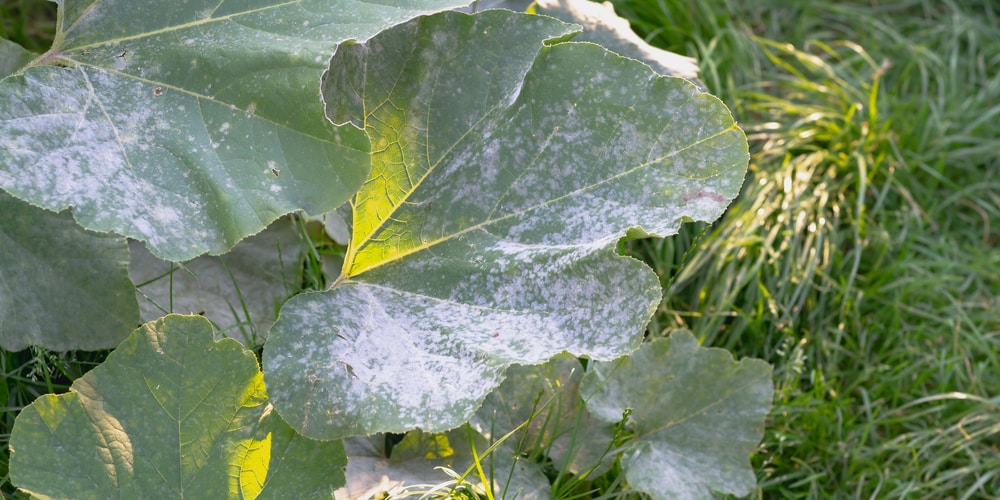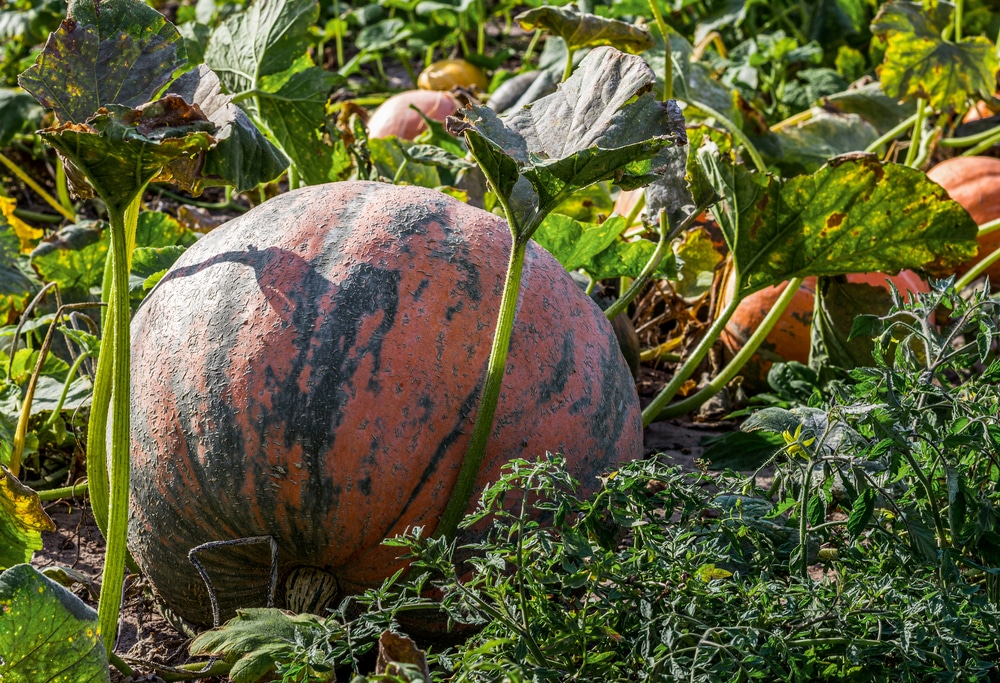Pumpkins are a staple in large gardens across the US, whether as a nutritious ingredient or as a Halloween decoration. The large leaves of a pumpkin plant largely indicate its health. What should you do with pumpkin leaves turning yellow?
5 Possible Reasons for Pumpkin Leaves Turning Yellow
Needs Fertilizing
More often than not, pumpkin leaves yellowing is a sign that the plant needs fertilizing. Pumpkin plants are notorious for being heavy feeders, which explains why they can grow huge produce within a relatively short period.
In general, pumpkins prefer well-drained and constantly moist soil that’s rich in organic matter such as compost. However, simply amending the soil with a dose of fertilizer during seed planting won’t be enough- you’ll need to feed your pumpkin plants regularly to get a good harvest.
An NPK ratio of 18-18-21 is best for this type of vegetable. Don’t forget to apply the fertilizer once a month during its growing season and according to the manufacturer’s instructions. You can supplement with an inch or two of aged manure every time you fertilize to support the plant’s vigorous growth.
Environmental Stress
Planting pumpkins at the right time is important so they won’t experience environmental stress. Yellowed leaves, particularly ones at the edge or partial areas indicate that the pumpkins aren’t in their optimal environment. But the good news is that as long as it doesn’t get too hot or too cold, the yellowing can be overcome and your pumpkins can still produce a significant amount of vegetables come harvest time.
The right temperature range for pumpkins falls within 65 to 95 degrees F. To keep your plants from getting exposed to extreme temperatures you can add a layer of mulch or water more frequently.
Lack of Water
In the case of pumpkins, their leaves tend to turn yellow as a response to not getting enough water as opposed to getting too much.
Pumpkin plants thrive in constantly moist soil, with a low chance of root rot as long as it’s well-draining. One mistake in growing pumpkins is thinking that they don’t need too much water, and yellow leaves are often a sign of overwatering. A slow decline happens when the plant doesn’t get enough irrigation, and slowly falls and withers.
You can confirm that your pumpkins are suffering from a lack of water by touching the soil’s surface. If it’s dry then it’s time to reach for the hose or watering can. Keep in mind that weather and soil medium play significant roles in your pumpkin watering regimen. Looser soil will need more frequent irrigation, as would warmer weather.
Affected by Disease
Pumpkins may appear big and tough, but they’re actually susceptible to several common diseases, including downy mildew, sudden wilt, and verticillium wilt. Downy mildew will present itself as yellow spots in the leaves, while sudden wilt is a fast-acting disease that can kill a pumpkin plant quickly. Verticillium wilt infects the plant and causes the pumpkin leaves to turn yellow, as well as discoloration in the stems and roots.
Pest attacks can also cause leaf yellowing in pumpkins. Squash bugs are usually the culprit, followed by whiteflies and spider mites. Tiny white flies hover around the patch, or small webs on leaves signify a pest infestation. To control the pests it’s recommended that you use a vegetable-friendly insecticidal spray and constantly monitor your plants for signs of them.
Proper watering can prevent the occurrence of verticillium wilt and sudden wilt while cleaning up plant debris and moving the planting ground of pumpkins can prevent mildew attacks. You should also avoid overhead watering as much as possible and point the hose or spout at the ground and not the plant.
It’s a Natural Occurrence
Your pumpkin’s leaves turning yellow could be a normal part of aging. As a plant grows, it directs nutrients upwards and through new stems and leaves. Older leaves at the bottom tend to slowly turn yellow over time as they make way for fruits and newer growth.
Your pumpkin is probably fine if there’s only one yellow leaf at the bottom, while the rest are green and healthy. If this is the case, then you can cut it off using sterilized scissors or leave it to detach on its own.

